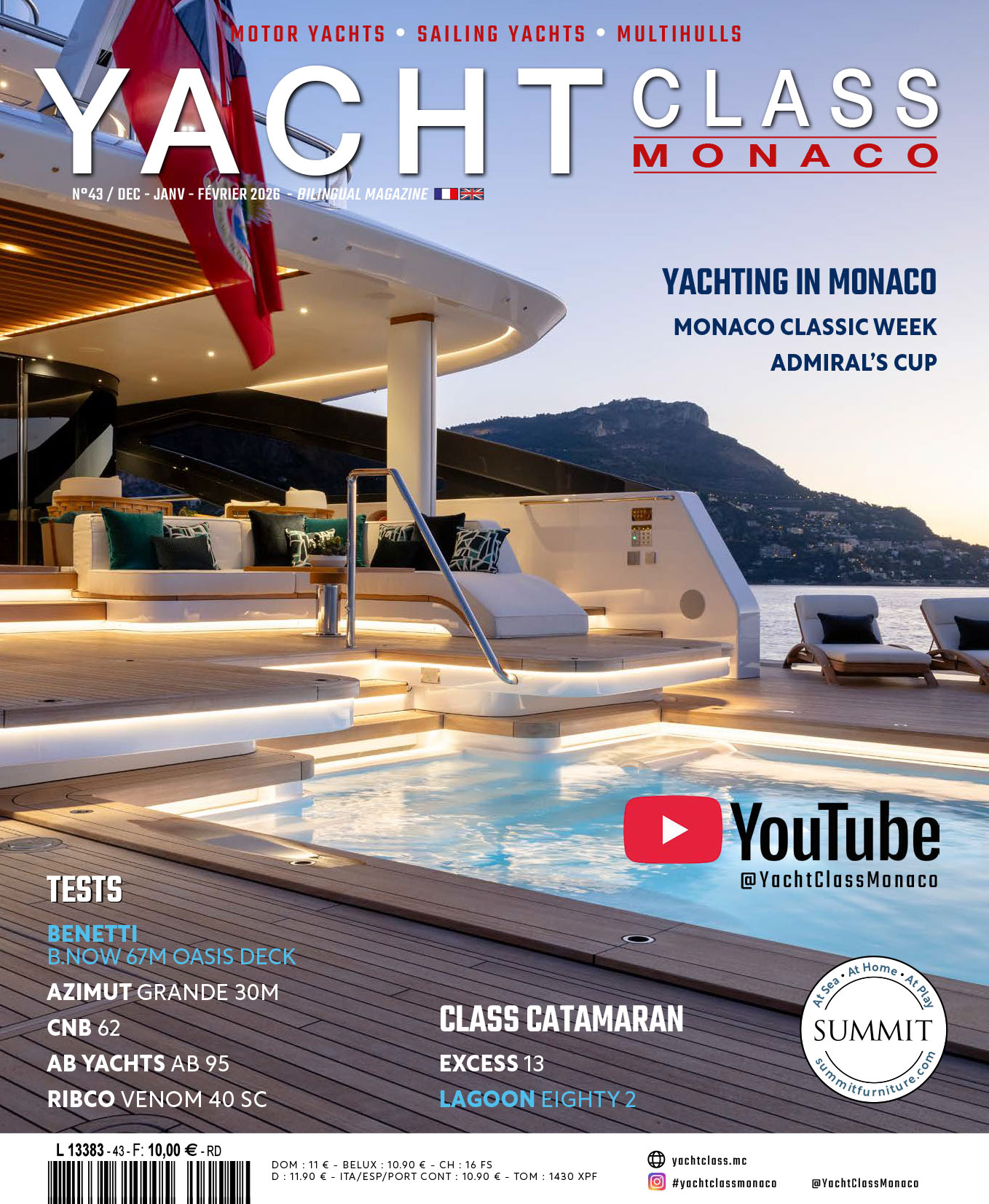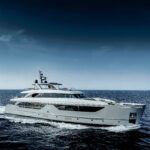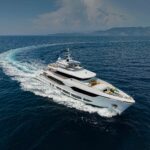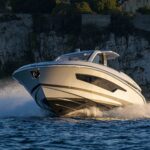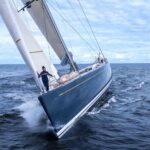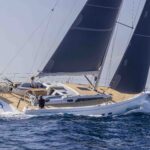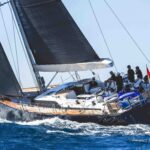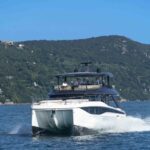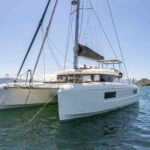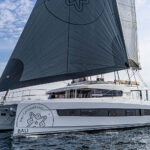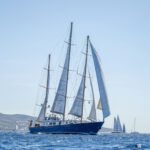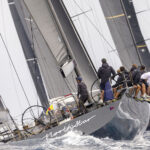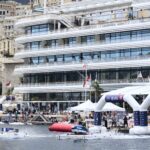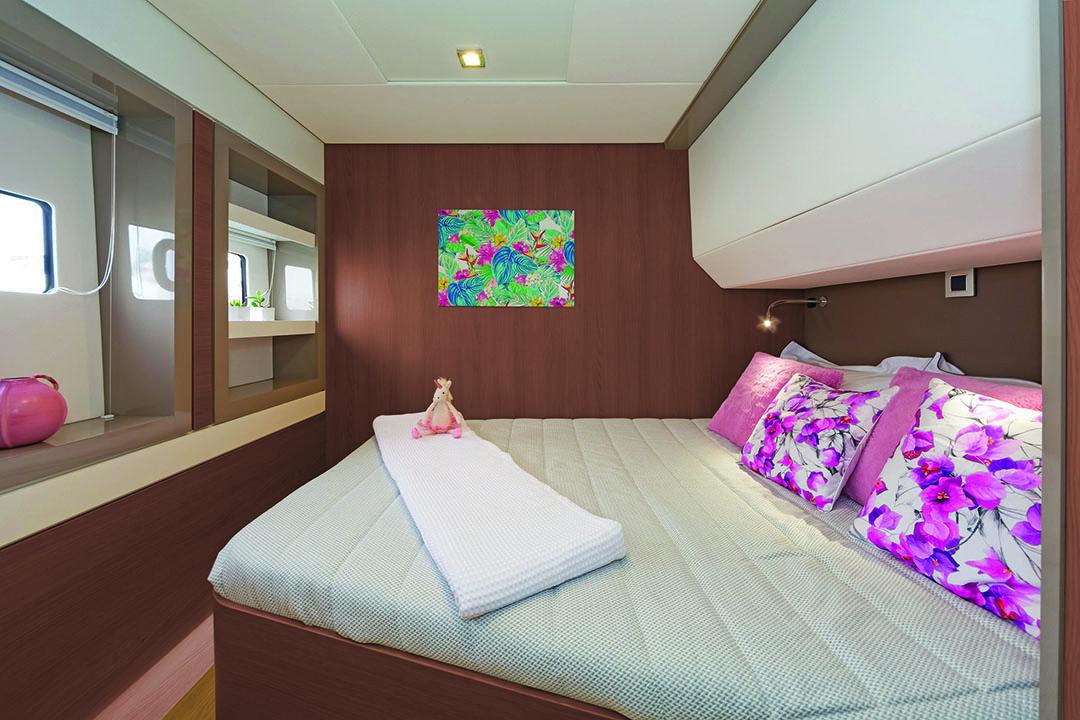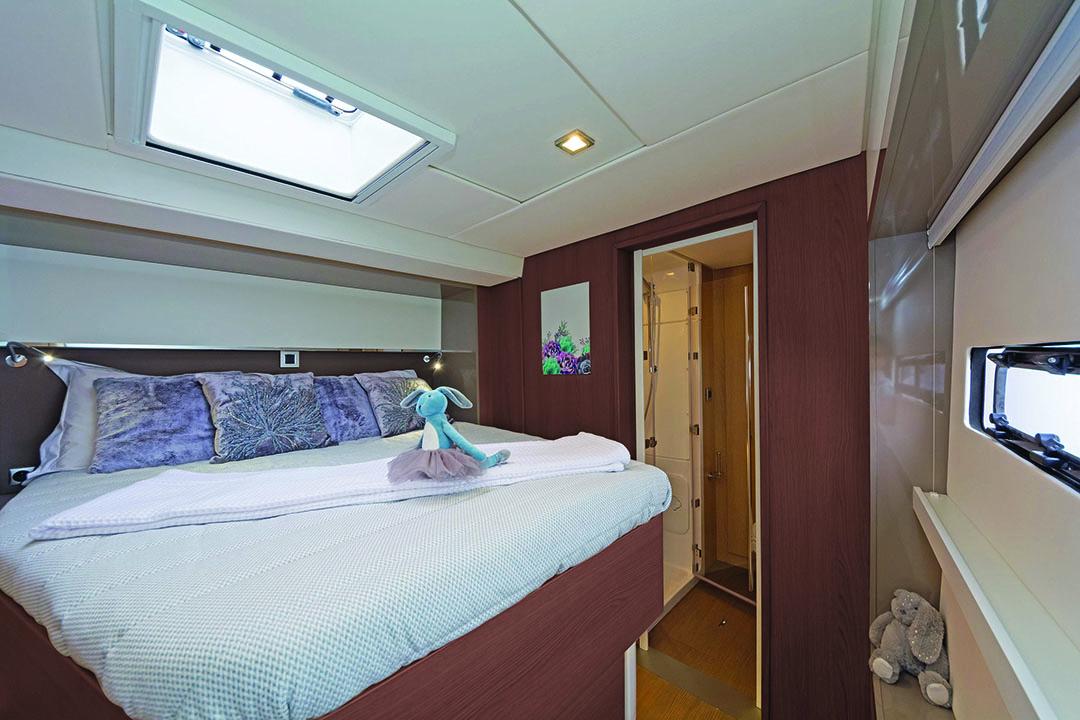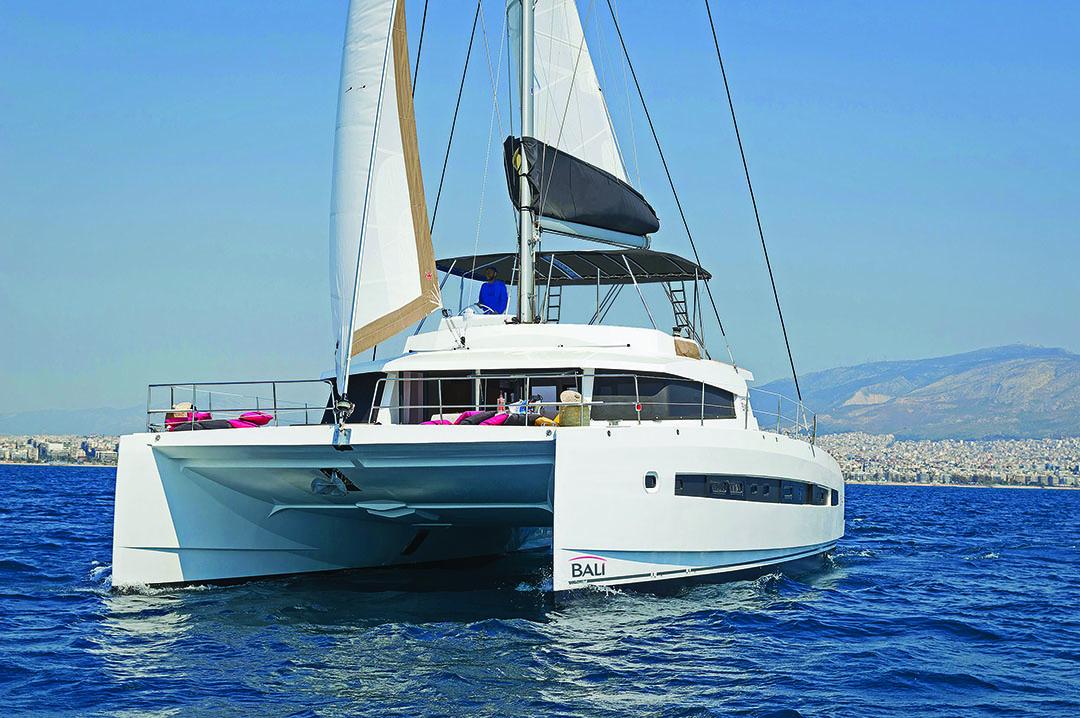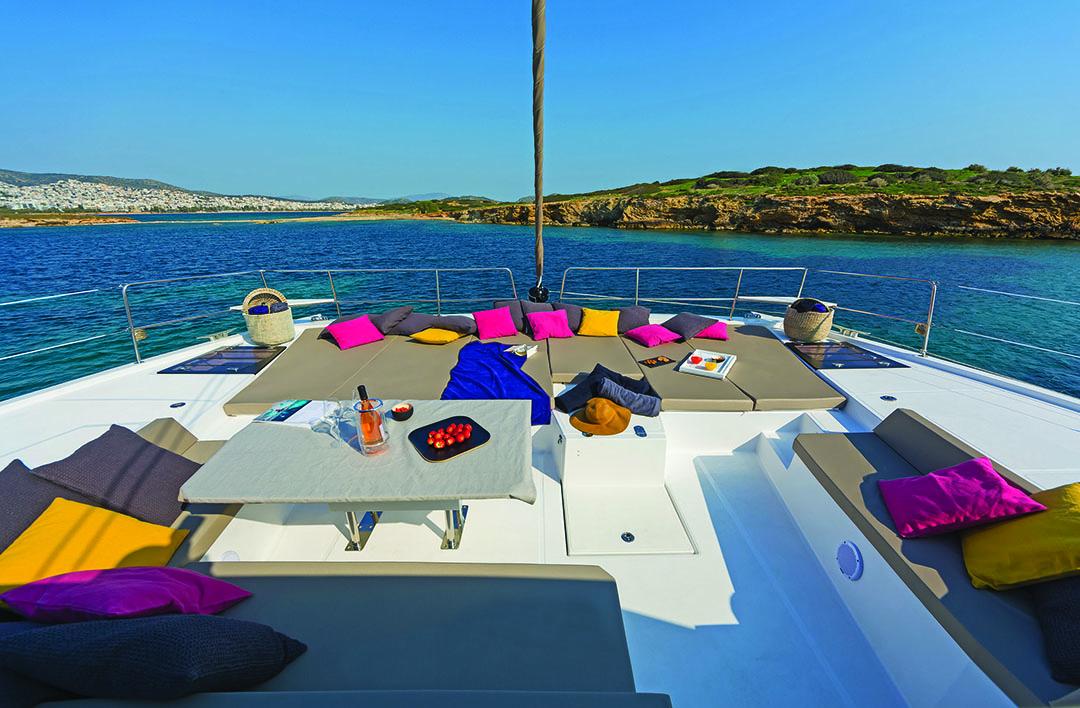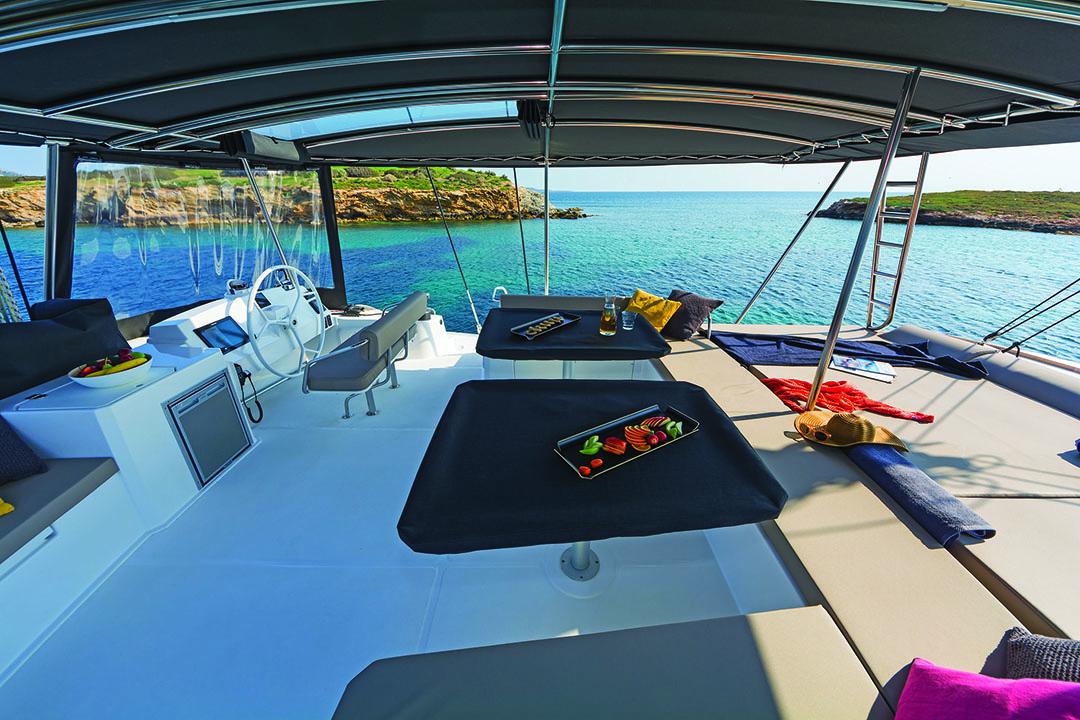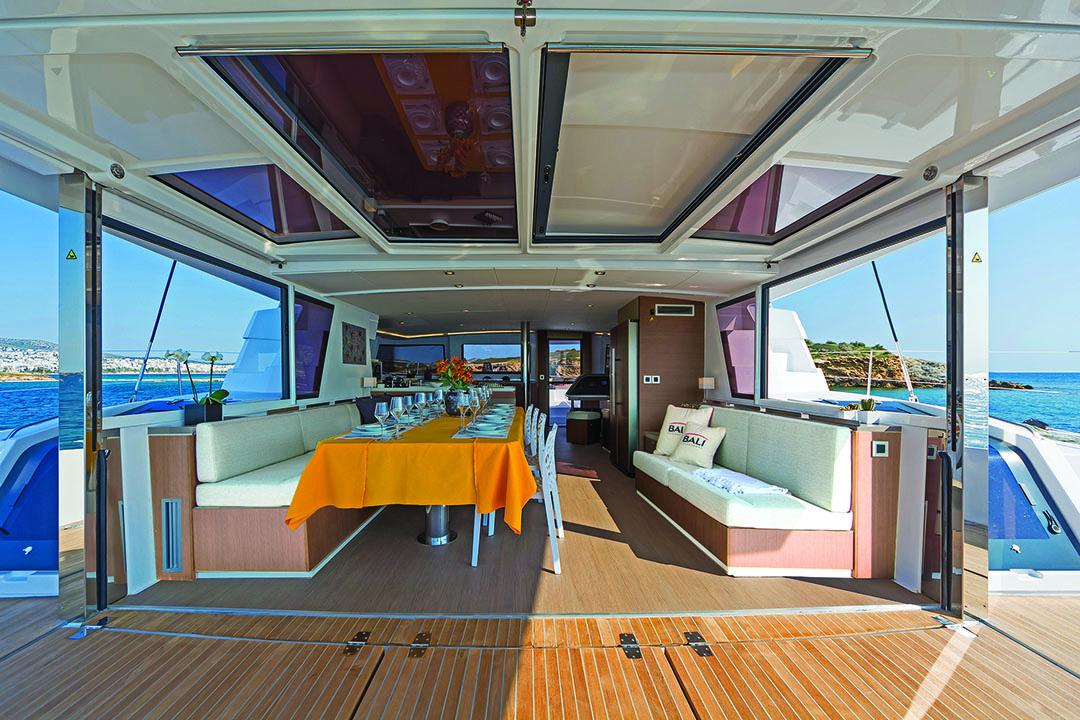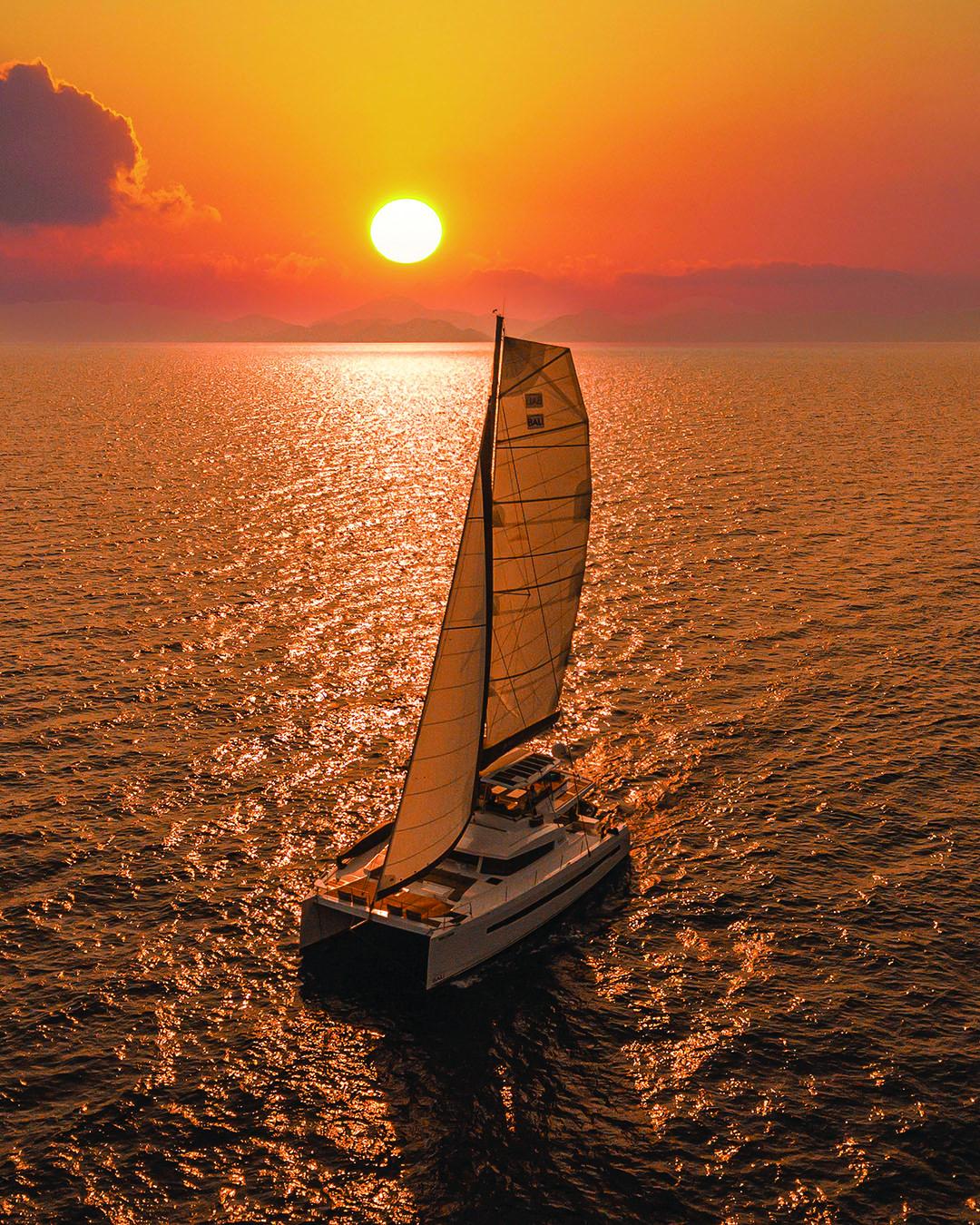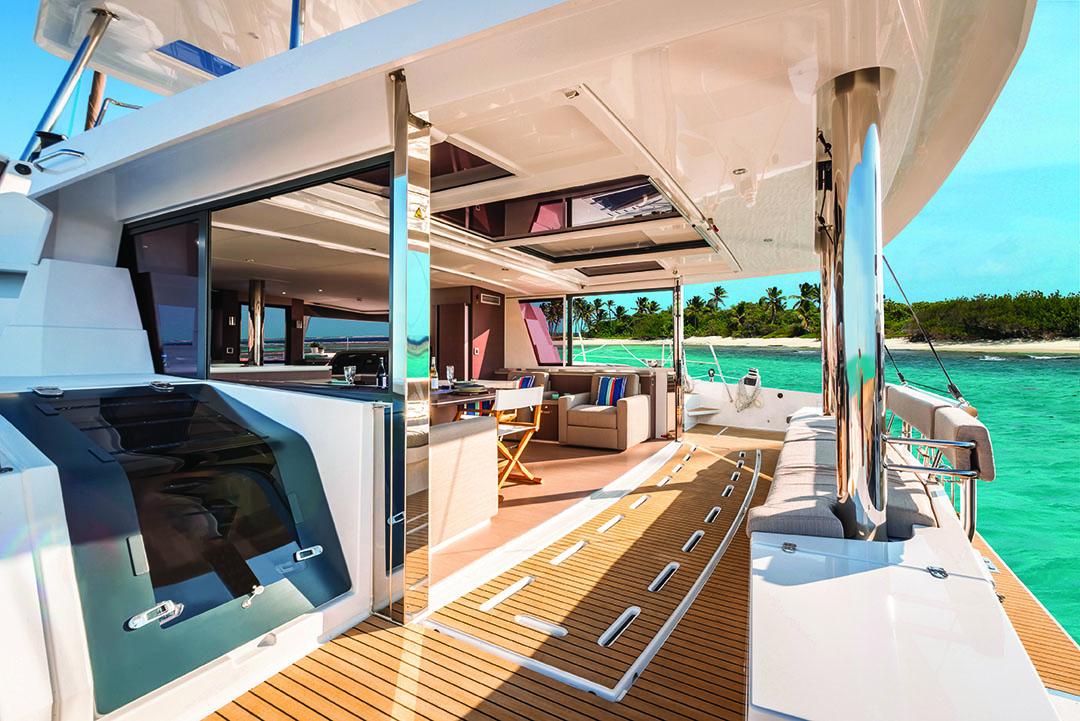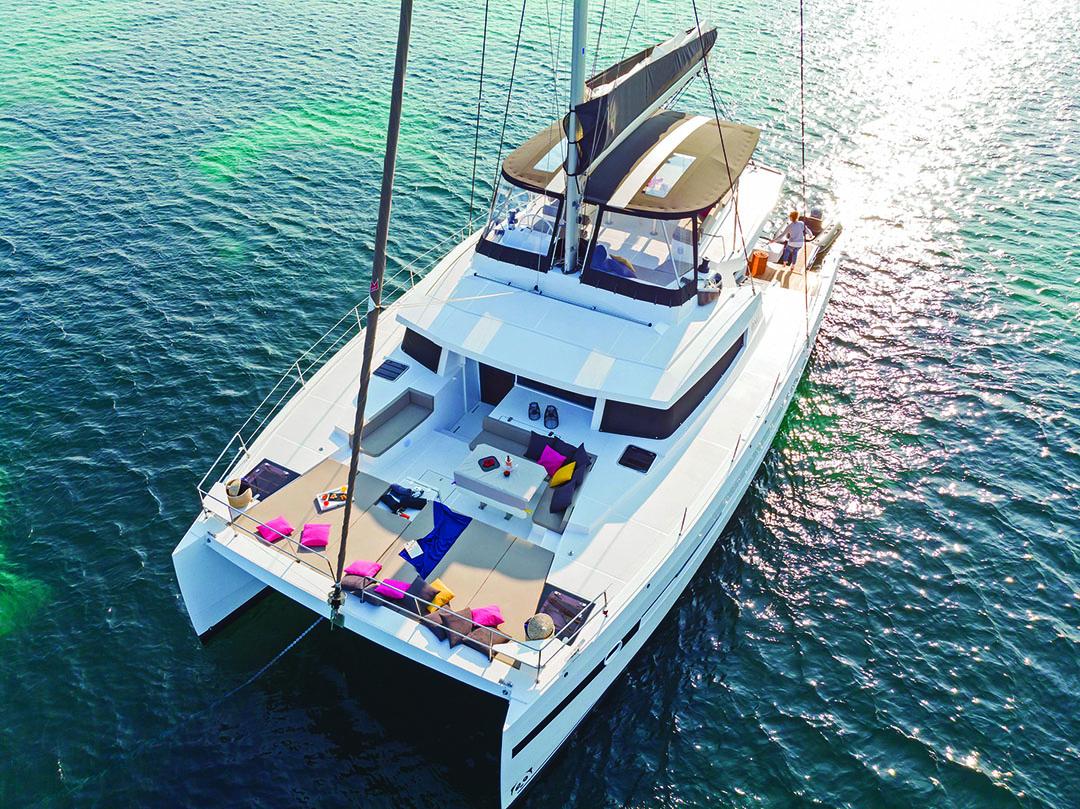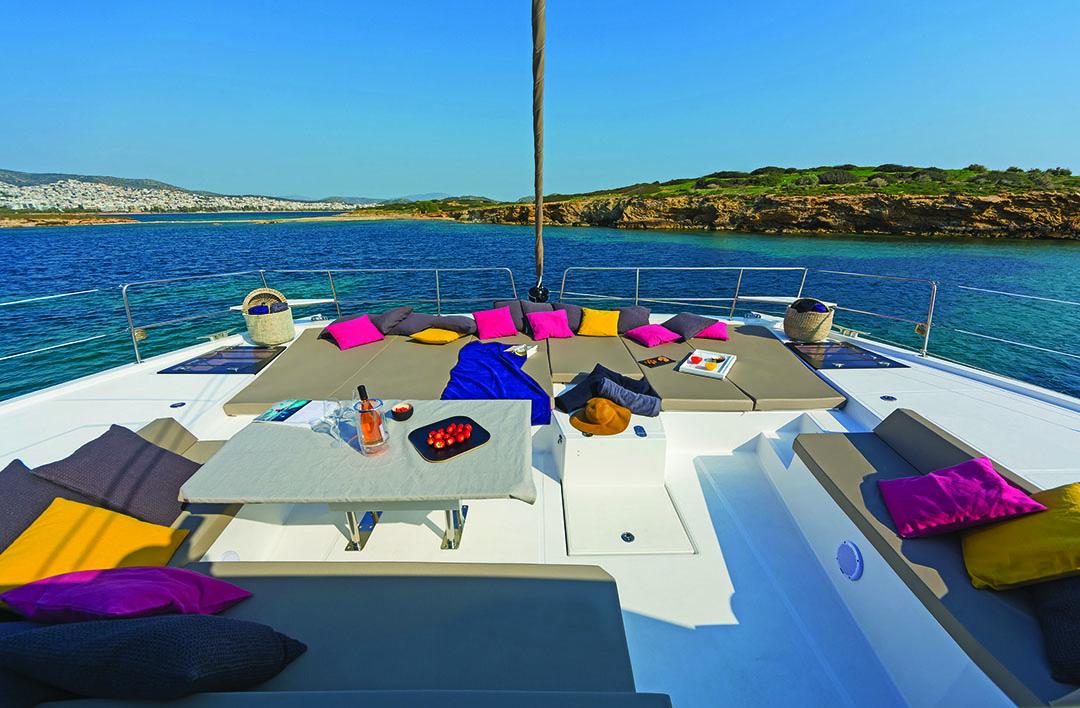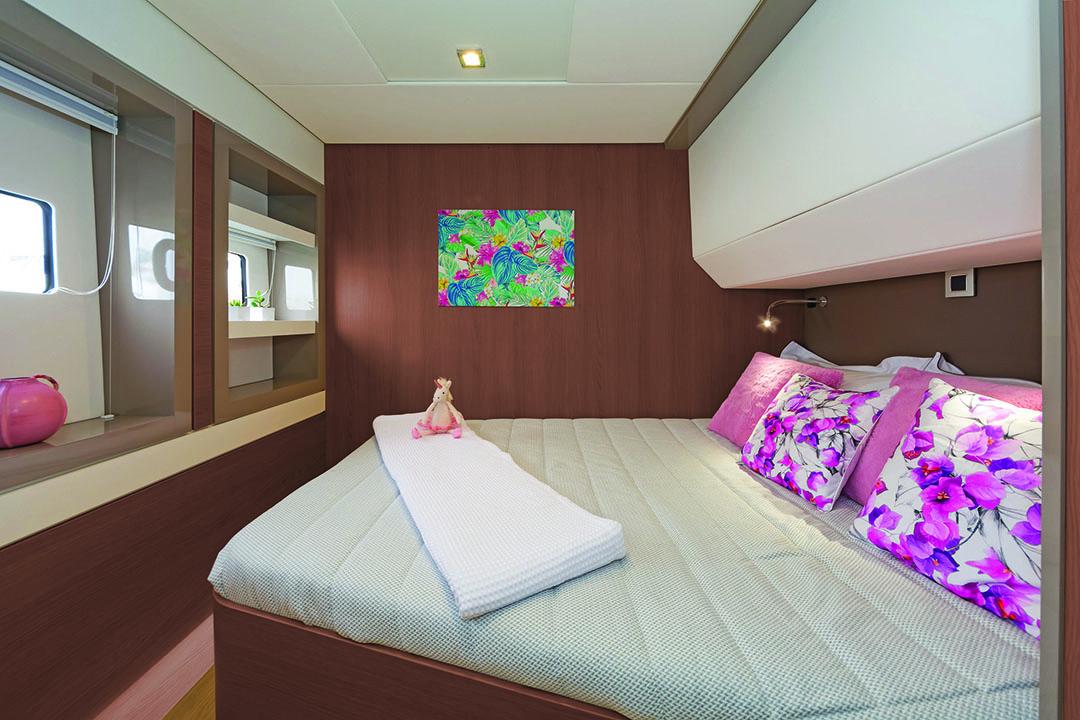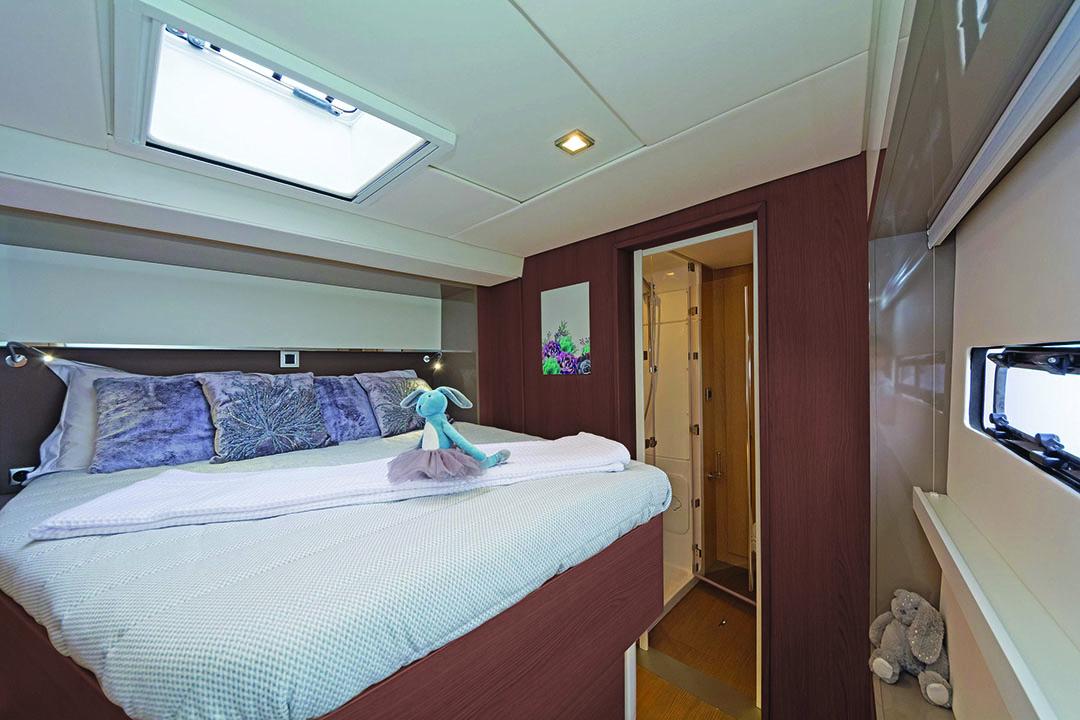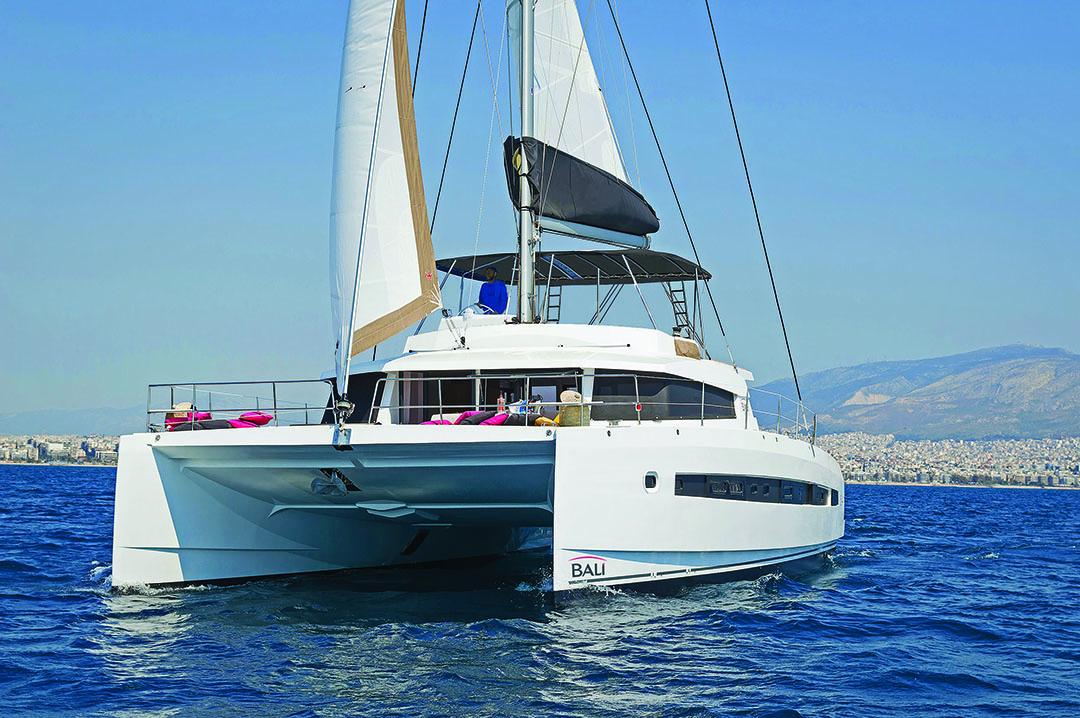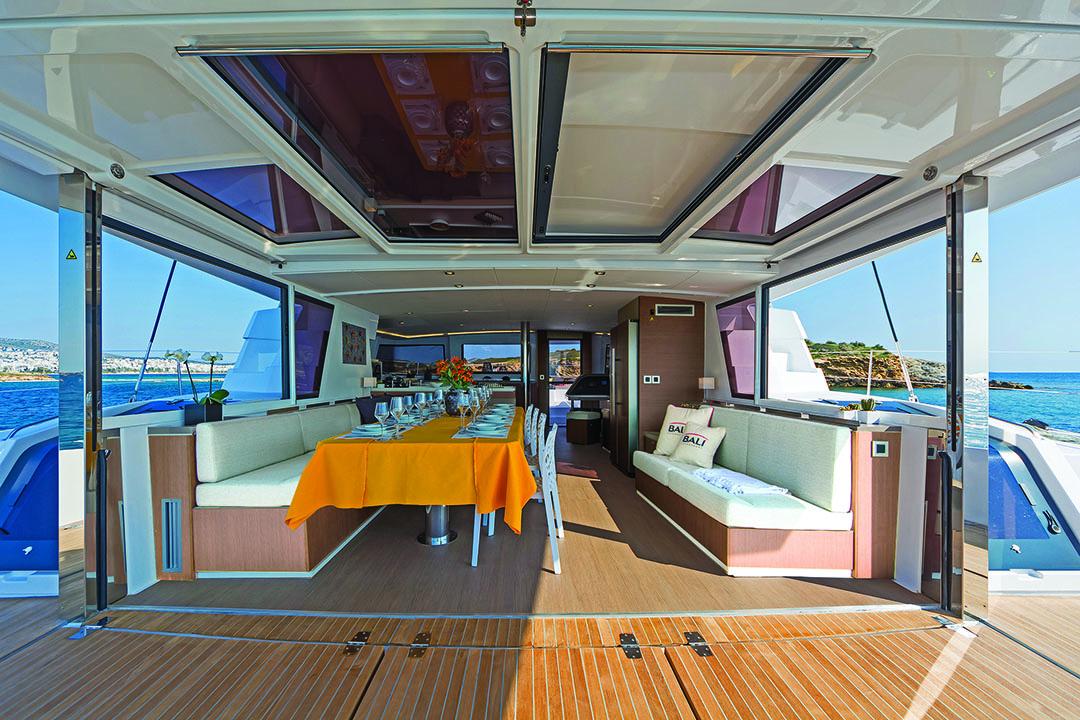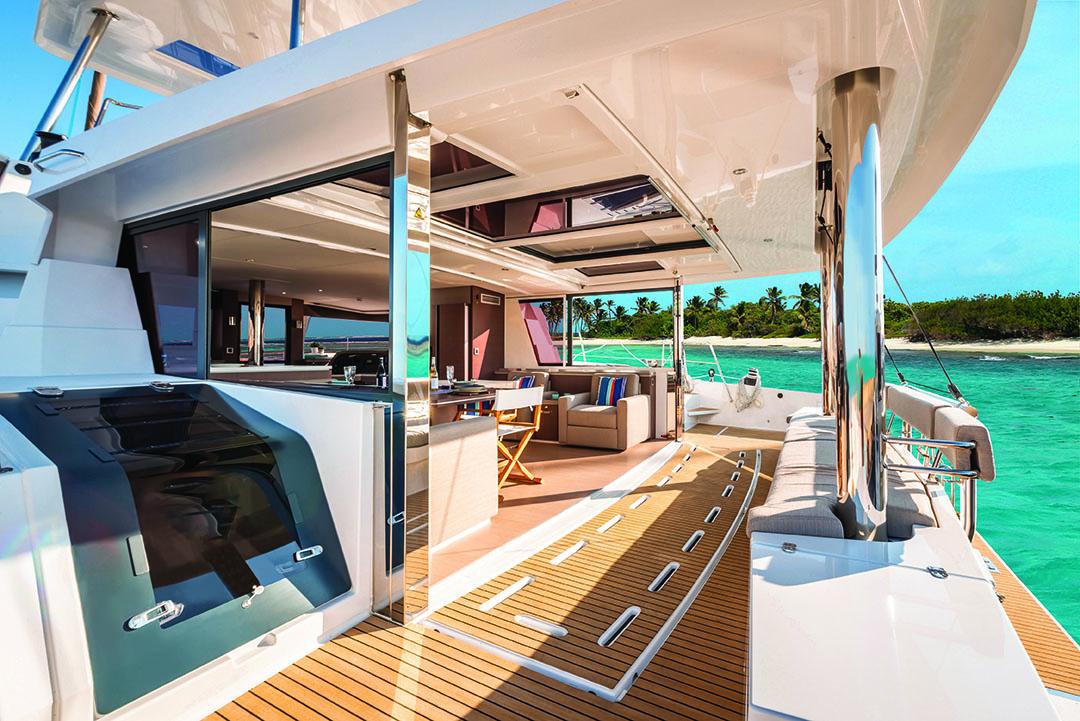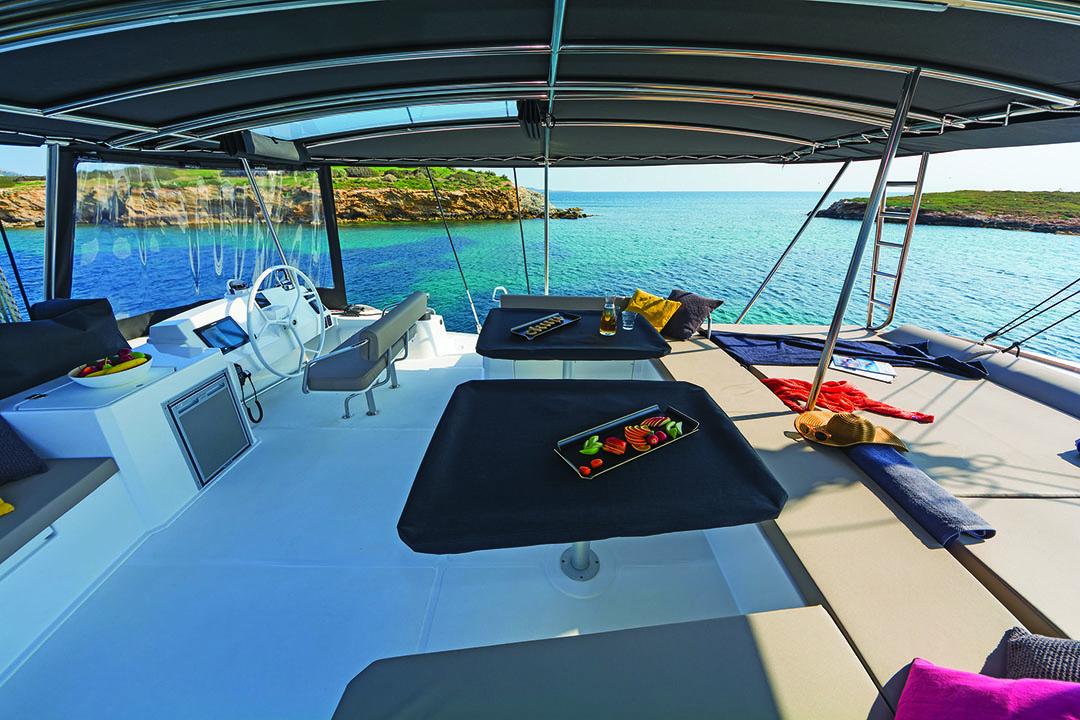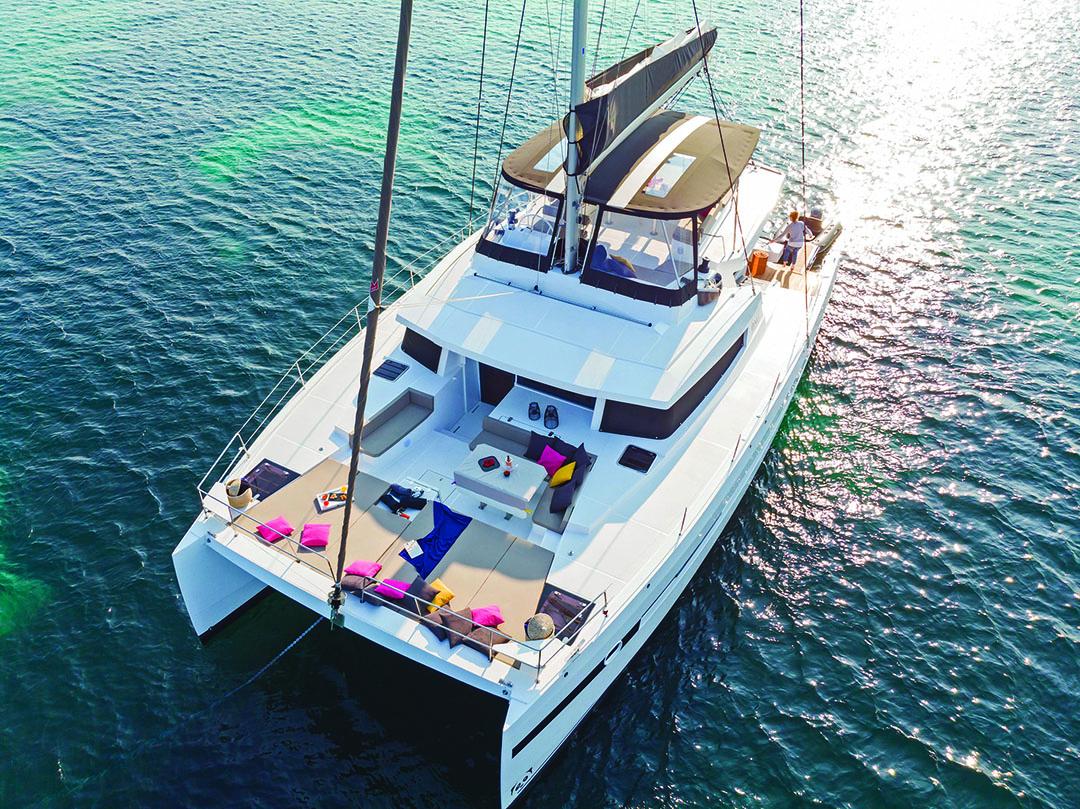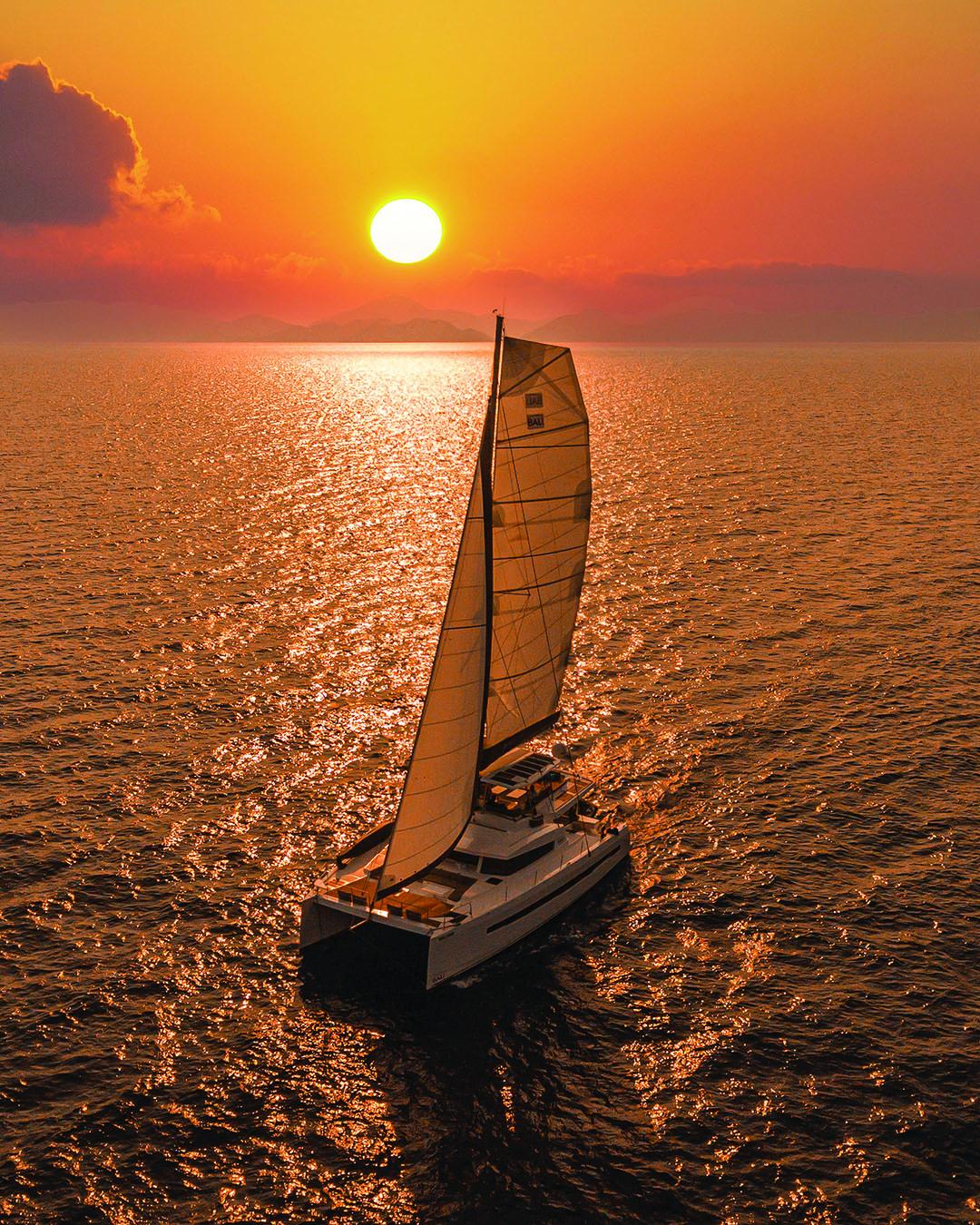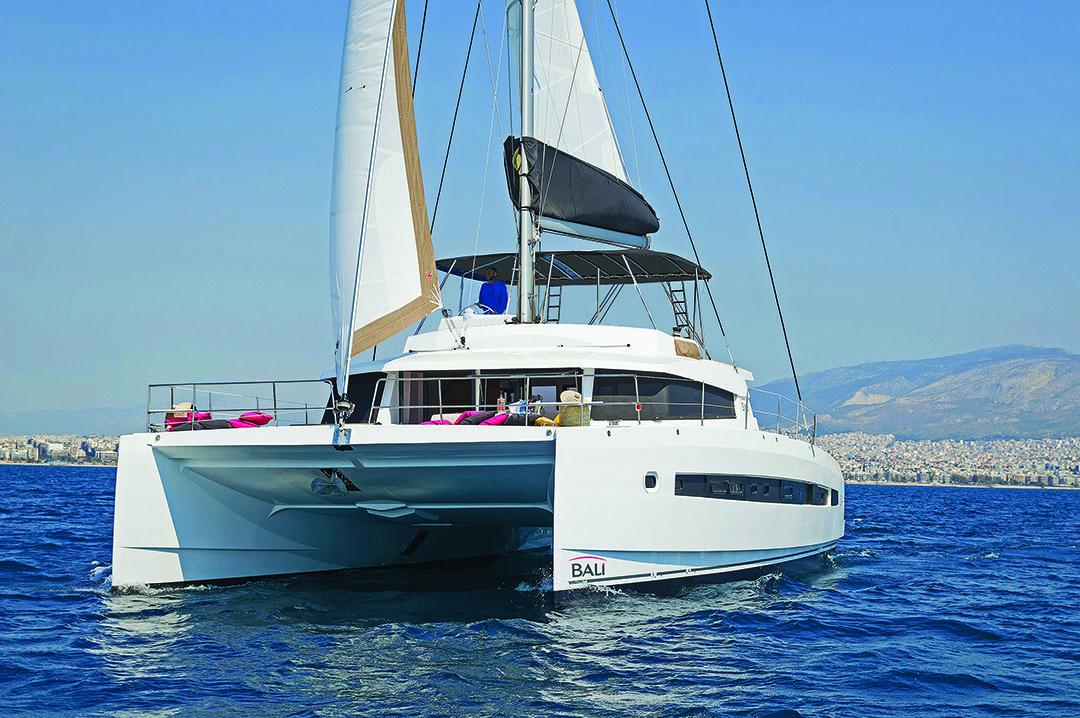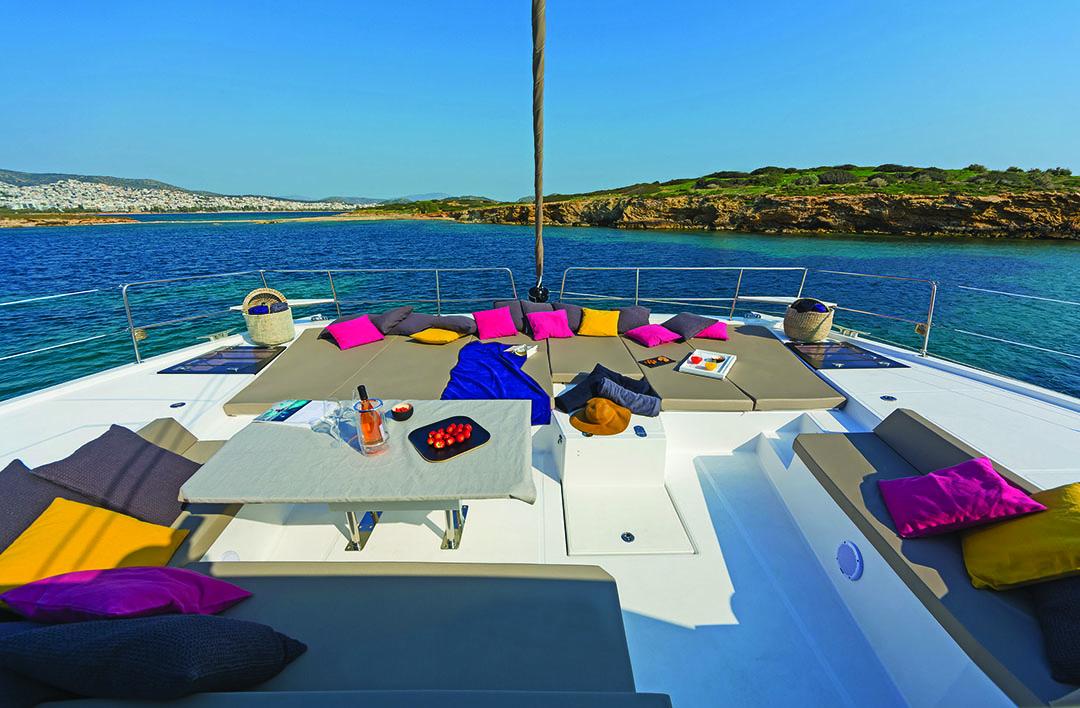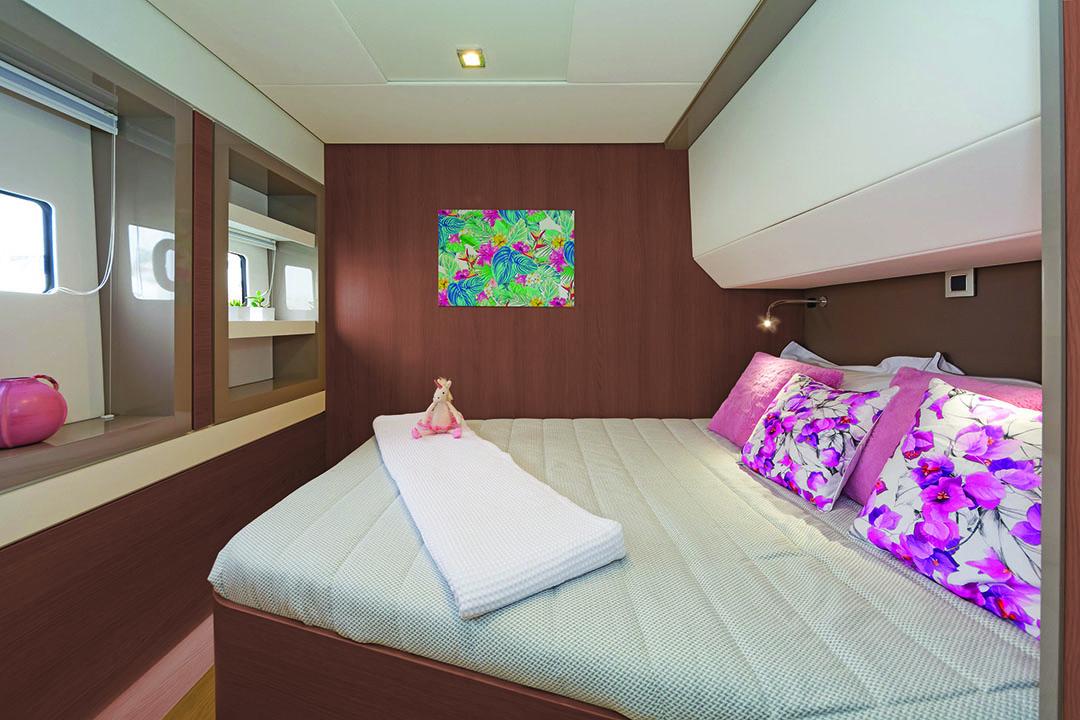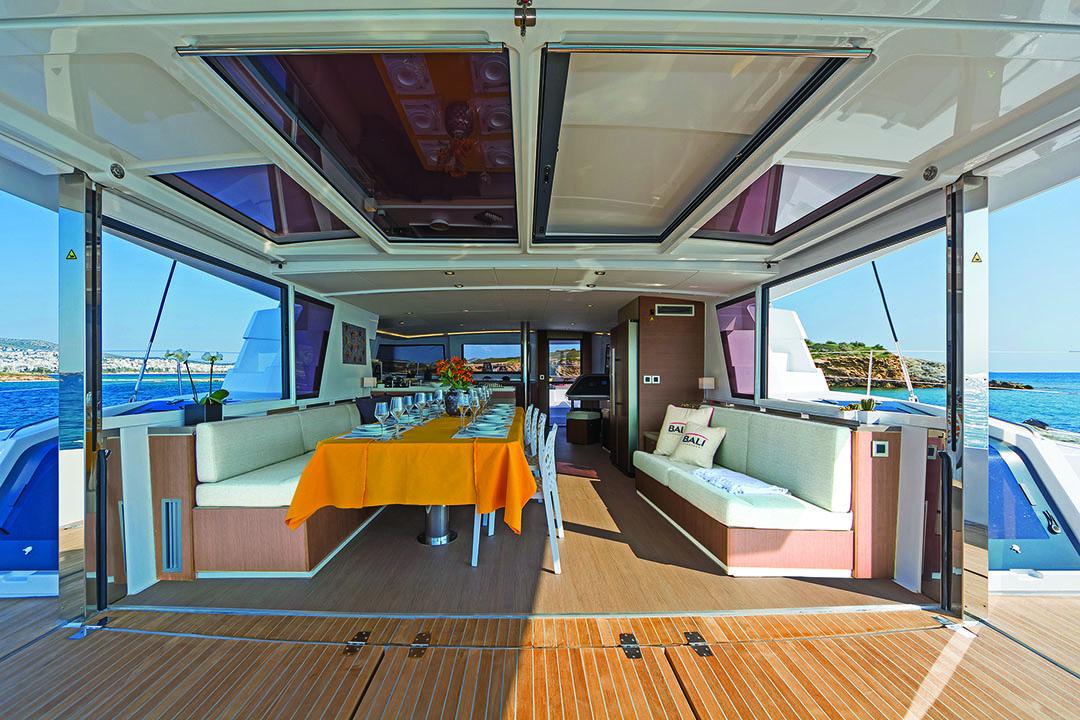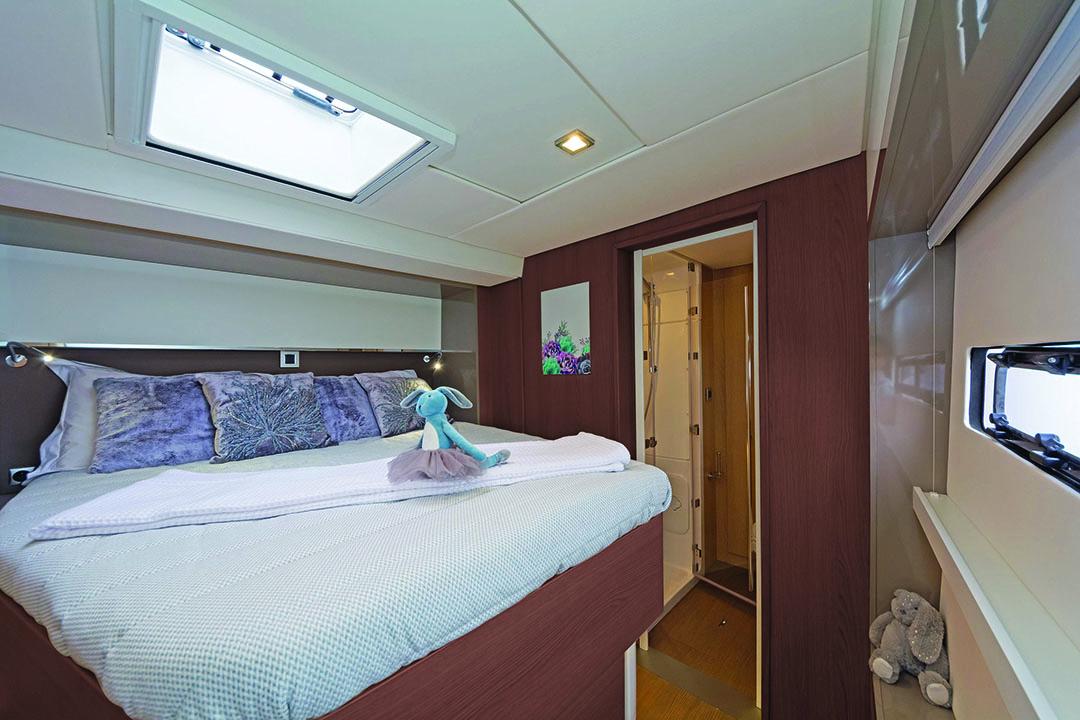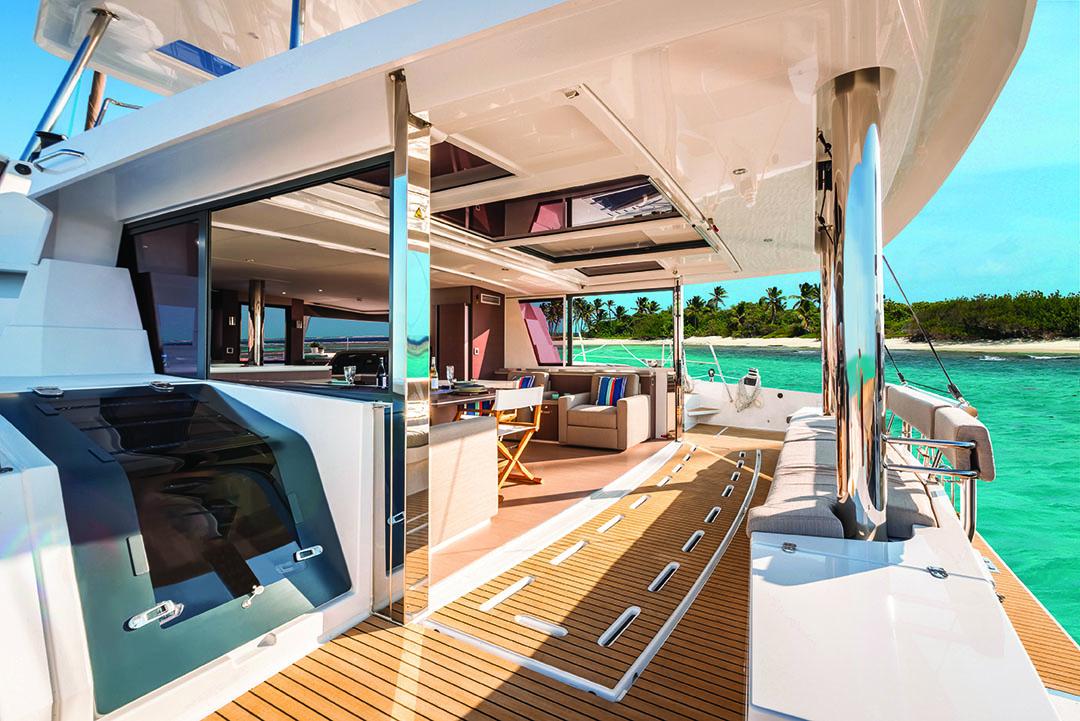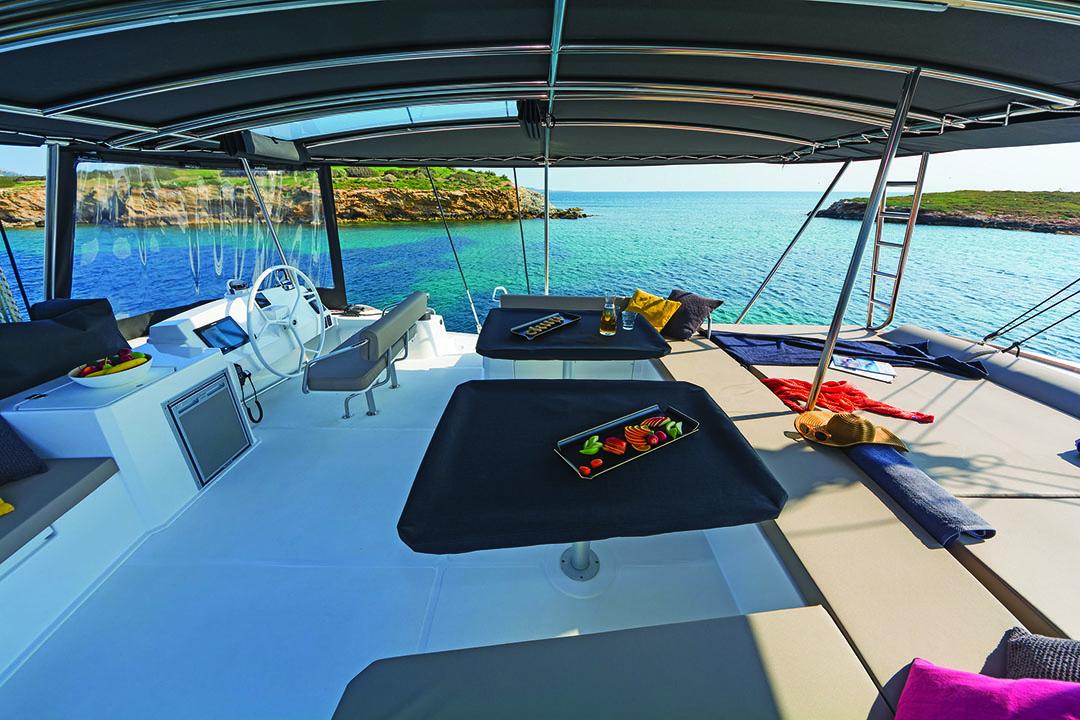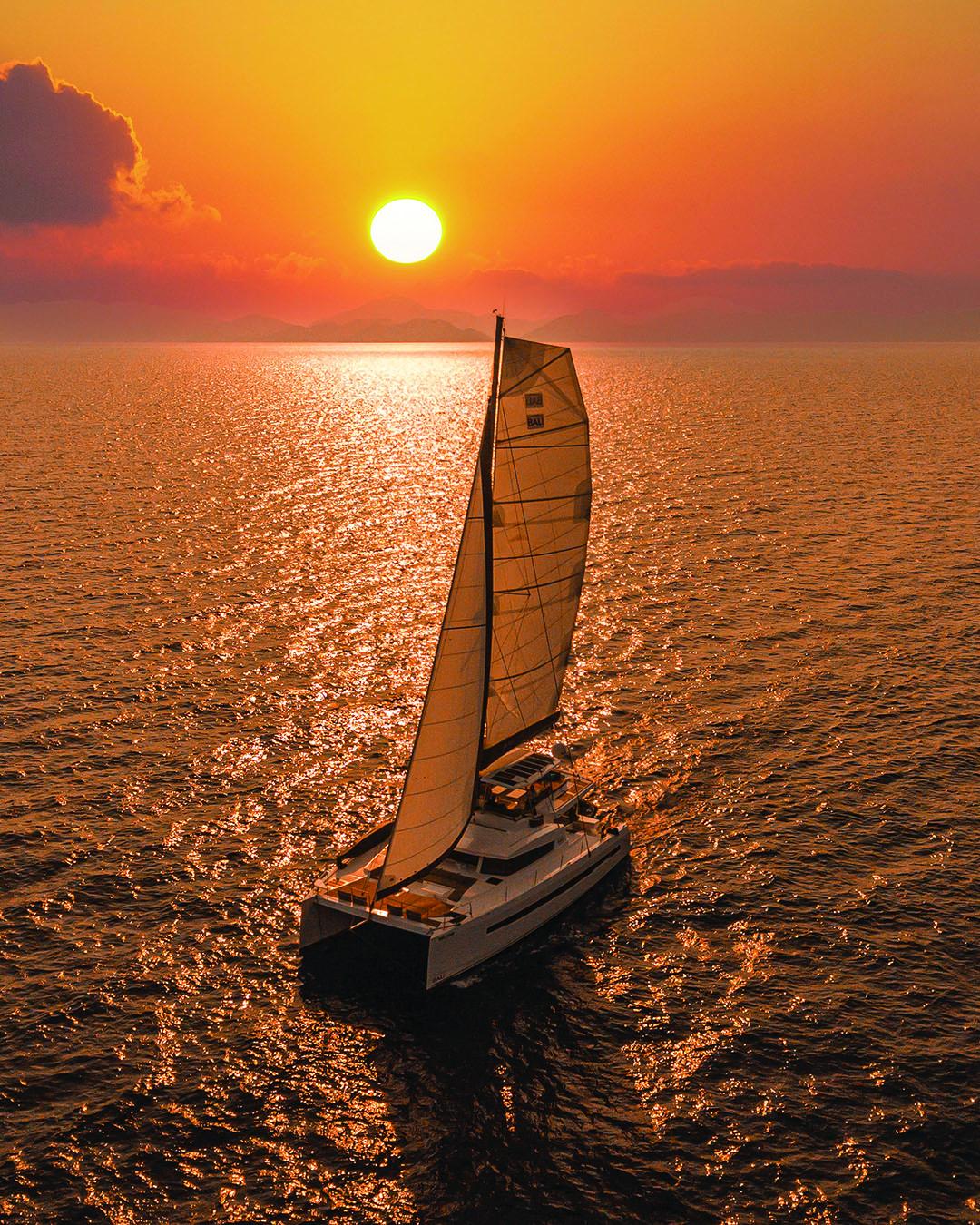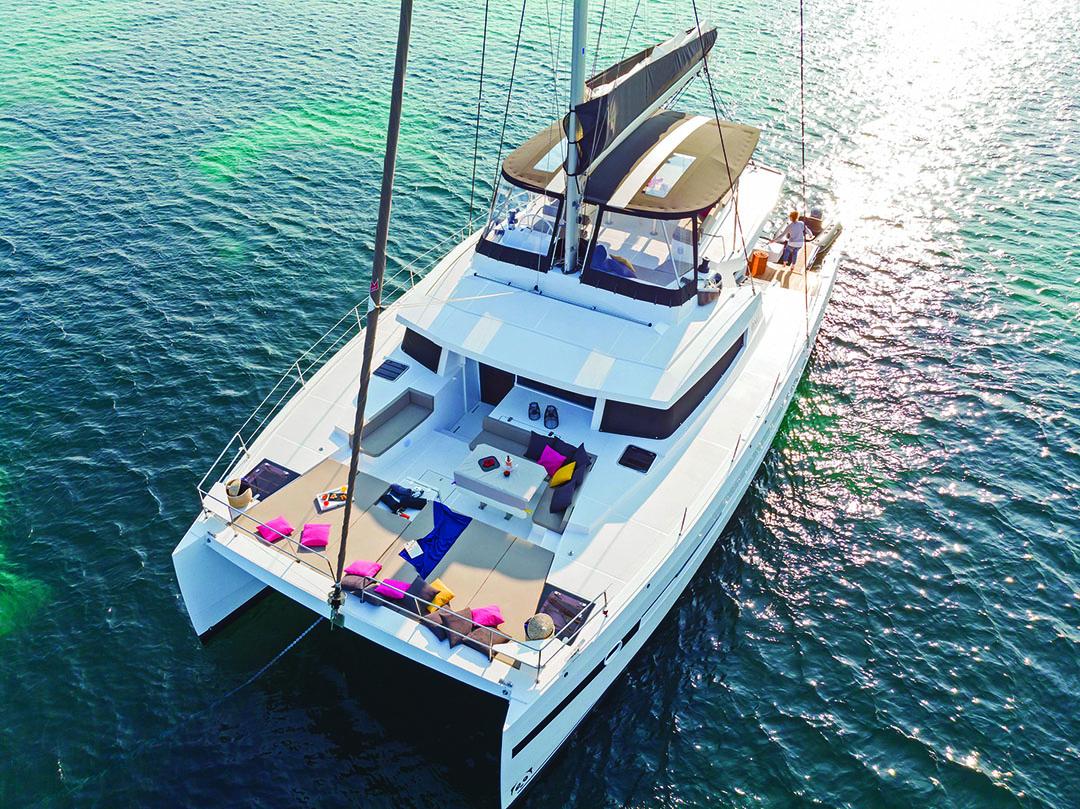Presentation
Yacht Class n°25 (june-july-august 2021)
BALI – Chantier Catana
The flagship of the range, the Bali 5.4 performs well in breezy conditions, but her main strengths come from well-designed layouts that merge indoor and outdoor living moments.
Written by Christophe Varène – Photos: Istion, Balibey & A.Rizon
Within the Catana Group founded in 2014 by Olivier Poncin, the philosophy of the two brands (Catana and Bali) is perfectly distinct. With 37 years of experience, the Catana catamarans have built a solid reputation for performance for elitist units, while the very young Bali line, born at the same time as the group, intends to be more accessible, in particular by proposing fittings for the rental world. In less than ten years of existence, the Bali family has experienced a strong development linked to the tremendous growth of the catamaran market, but also thanks to innovative and attractive layouts, and today comprises 11 models, including two motor yachts. The Bali 5.4, as the flagship of this fleet, wants to carry the values of the brand high and a sea trip from Canet-en-Roussillon, where the shipyard is located, gives her the opportunity to prove it.
Easy tacking
The weather conditions are interesting with a steady breeze, which raises a good chop: perfect to judge the behaviour of the boat whose hulls, designed by Xavier Faÿ, with very fine water inlets, are noticeable. All the manoeuvres are carried out from the flybridge on two winches, one of which is electric as standard, positioned on the outside of the boat, which allows good visibility of the operation in progress. The mainsail, of which there is a horned version as an option, is raised at a senatorial pace, then the self-tacking solent is unfurled: immediately the Bali 5.4 shows a good aptitude for speed with 10.7 knots posted for 26 knots of wind and 40 degrees in apparent. Tacks, with this sail plan, are easy, provided that they are carried out with vivacity to take advantage of the boat’s forward motion. A pleasant surprise is that the front platform, which extends to the bows where many competitors use nets, does not knock in a slightly choppy sea. Once the solent has been removed and replaced by a code 0, the speed stabilises at between 8 and 10 knots, accelerating to 11 knots in gusts of 22 knots. This is enough to carry out long sailings without losing time and with a good level of comfort. This positive outing ends with an appreciation of the efficiency of the two 80 hp Yanmar engines (slightly more than the standard 2 x 57 hp) which allow a cruising speed of 7 knots at 1 800 rpm.
The saloon, one of her strong points
If the behaviour at sea is therefore validated, it remains to carry out a tour of the facilities to appreciate the Bali 5.4 as a whole. Before leaving the flybridge, it is time to appreciate the large saloon with two tables well protected under the rigid bimini and the solarium on the rear hatch. As you descend, the impression of narrowness in the cockpit is surprising for a unit of this size, but this is without counting on the “Bali door” effect: manually operated, or electrically operated as an option, the whole of the bay separating the saloon from the cockpit comes to rest under the roof and creates in a few seconds a huge interior/exterior space. Easy to use, this tilt and turn door is one of the strong points of the Bali range, adapting the configuration of the boat to the conditions of navigation and the moments of life. The forward saloon is another of the brand’s strong points: accessible through the gangways or through a door located between the interior navigation station and the galley, the platform occupies all the space between the hulls from the cockpit to the bows. This area is fully usable with benches, table and sunbathing area. At the stern, the fixed platform where the tender is stored with the help of davits is also available in a hydraulic submersible version for less physical use.
The port side hull dedicated to the owner’s suite
The saloon, whether in the open or closed configuration, has a comfortable dining area for eight guests and a bench seat opposite, while forward are the chart table to starboard and the U-shaped galley to port, which conceal the two companionways leading to the cabins. The latter appears functional, even at sea, with its fargues on the furniture, and well equipped. The port hull is, on this boat, entirely dedicated to the owner’s suite, which offers a long perspective from the bow, with shower cabin, bathroom with double sink and dressing room, to the stern, with double bed, desk area, wardrobes and direct access to the cockpit. On the starboard side, three guest cabins take up the space, one with a double bed, another with two single beds and the third at the stern with a double bed, but accessible only from the cockpit. Each has its own private bathroom. Different layouts are available, with up to six cabins plus two crew quarters in the points. Sober and playing on contrasts in colours and materials, the interior design by Lasta Design highlights the general luminosity and the quality finishes. Comfort on board and marine skills, all that remains is to set off to discover new seas and enchanting anchorages.
Technical sheet
